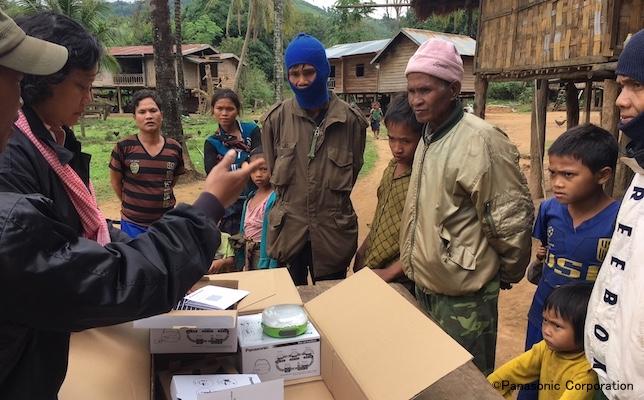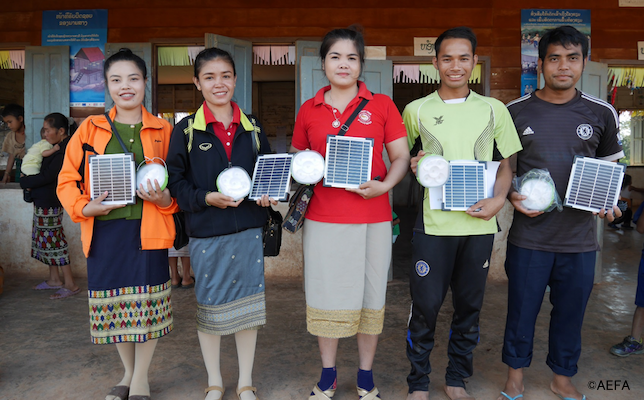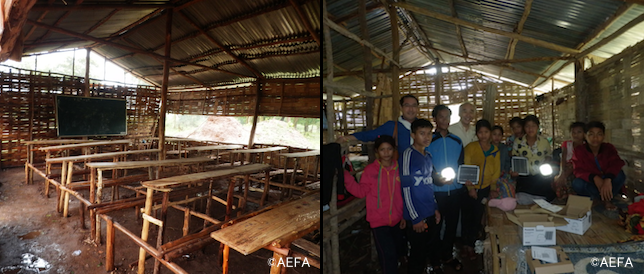2019.03.29Field Report
Being a Part of the "AKARI" Bringing Light to People Project, Report by Volunteer Employee Reporters
2018.01.11 Field Report
November 2017, we donated lanterns for the first time in Laos through the Asian Education and Friendship Association (AEFA.) AEFA is one of the organizations chosen through our public donation program in 2016. We and AEFA staff delivered solar lanterns directly to schools and villagers in the Ta Oy District of Salavan Province.
Hello, this is project member Hal Okuda.
The aim of recipient organization AEFA is to educate children, the future of Asia. It works to improve the learning environment through collaboration with local residents to build and run schools, and has built 80 schools in Laos thus far.
Ethnic minorities in mountain villages where the solar lanterns were delivered generally live self-sufficiently through agriculture and gathering wild foods. However, the gap between rich and poor has increased due to some regions cultivating crops like coffee to gain income whereas other regions have faced difficulty after losing farmland to rubber, banana, and other plantation development. Many villages have no electricity and others have power poles, but still no electricity due to lack of funds to pull power into the lines.
Education is a particular challenge in the villages. Remote villages in mountain regions still have no schools and even in villages with schools, they are often hand-made shacks without the proper learning environment for children. Villagers concerned with this situation take part in AEFA school management in their desire to give the next generation an opportunity to pursue new possibilities that they themselves did not have, based on the firm belief that education is the one key that will open new doors.
To make this donation, we traveled with big boxes since our mission was to personally hand-deliver the solar lanterns from Japan. Approximately 3.5 hours by car from Pakse International Airport we came to a large river that we could not cross by car, so we waded across the river to carry everything on foot.
Crossing carefully to avoid slipping and dropping the lanterns
Ceremony at BuongNam Secondary School

Explaining how to use the solar lanterns to villagers in Lala village in Lao and the local minority language. Here, solar lanterns are used for village meetings and events.

Teachers at BuongNam Secondary School. "It's so great that we can prepare for the next day's class even after dark. We'll take good care of our lanterns!"
Solar lanterns are used in dormitories where teachers and students live together. The students were happy to tell us, "Until now, we only had the small light of a flashlight so we had to huddle together to read, which was inconvenient. Now, the solar lanterns let us study at night and talk with friends."

The Piko Secondary school (left) and dormitory (right) built by villagers. The light of solar lanterns is precious since there is no electricity.
I felt the villager's excitement more than usual, perhaps due to the many obstacles that had to be overcome to deliver the lanterns. Despite being our first visit, Laos has already found a special place in our hearts. We truly hope that the light of solar lanterns will change the children's future for the better.